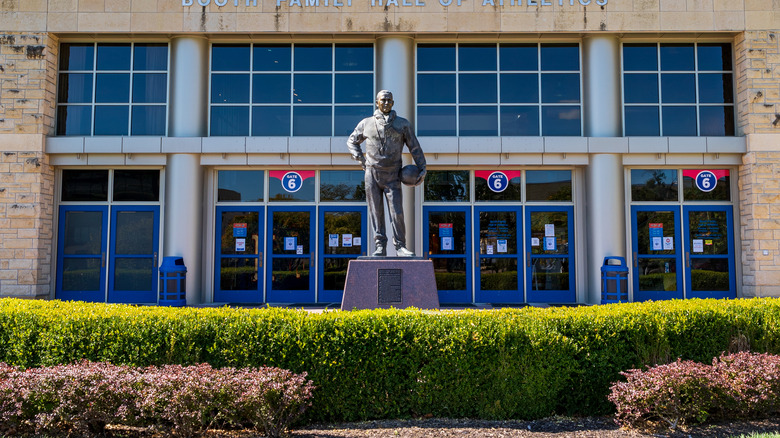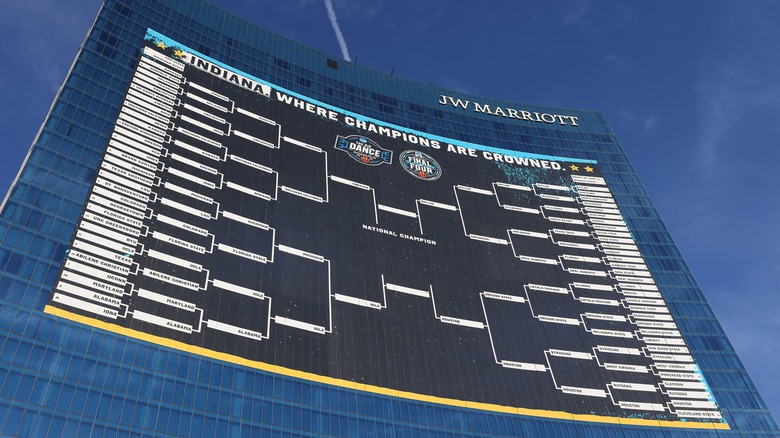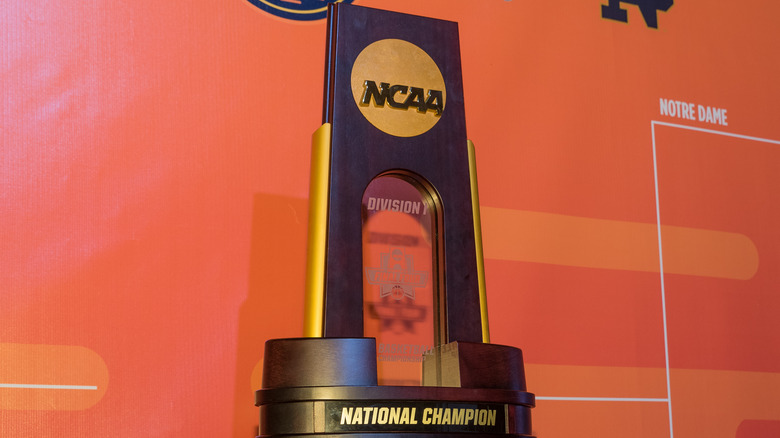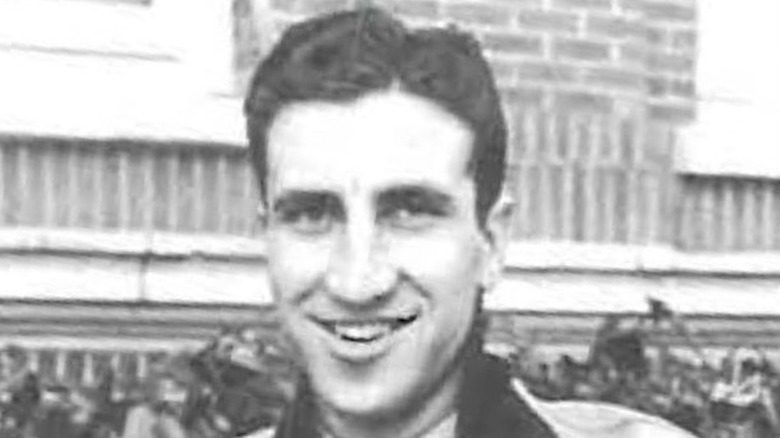What Was The First NCAA Basketball Tournament Like?
Each March, college basketball fans fill out their brackets in eager anticipation of the NCAA College Basketball Tournament, known as March Madness. In the event, 68 of the country's best college basketball teams are seeded, meeting in single-elimination matchups until only four teams remain, commonly called the Final Four. After that, the two teams left standing go on to meet in the championship round. It's then that a college basketball champion is crowned, per the NCAA website.
Over the years, wagering for pride or money on the results of March Madness has become one of the most popular pastimes for sports fans worldwide, while the overall tourney is a media spectacle that now rivals the Super Bowl and the World Series, among other major sporting events. For this reason, TV and other media contracts for the tournament are valued in millions, per SB Nation. When the NCAA got started back in 1939, though, it was all a far cry from what March Madness is today.
It wasn't an NCAA event
Calling the on-court competition that happened in the very first college basketball championship the NCAA "tournament" isn't exactly accurate. And although it was likely in use before that, "March Madness" wasn't popularized until sportscasting legend Brent Musburger used it on the air in 1982, according to the NCAA website. The reason the tournament couldn't be called the NCAA College Basketball National Championship is because the NCAA didn't host it at all. Instead, it was put on instead by the National Association of Basketball Coaches (NABC), according to Terry Frei's book, "Before the Madness — The Story of the First NCAA Basketball Tournament Champions."
Still active today, the NABC was founded in 1927 by Forrest "Phog" Allen. It's the nation's largest professional organization of basketball coaches, representing the NCAA, but also other leagues in college basketball, such as the NAIA, USCAA, NCCAA, and even two-year colleges. The organization also includes coaches in high school and youth programs. For that reason, that first college basketball tournament in 1939 might be considered a more all-encompassing championship since play was not limited to teams belonging to the NCAA, like it is today (via NABC). The Allen Field House on the University of Kansas where "Phog" Allen coached is pictured above, with a statue of "Phog" Allen front and center.
There were far fewer teams
When the first NCAA tournament took place in 1939, there were far fewer than the 68 teams allowed to play today. The first field of competitors, in fact, was limited to only eight teams, as the NCAA website records. The entire notion of a national basketball championship tournament was considered an experiment. Cross-country travel was not as easy or cheap back then as it is now, and organizers thought that it all might only last one year, according to Frei's "Before the Madness."
As history records, those involved in that inaugural tourney were wrong. According to the NCAA website, play was divided into east and west regionals, and the teams that made the cut that first year included the University of Oregon (then called the Webfoots, now the Ducks), Texas, Oklahoma, Utah State, Villanova, Brown, Wake Forest, and Ohio State. The western regionals took place in San Francisco, while the eastern regionals were held in Philly. The games were not broadcast on television in those early days, according to the Washington Post. They were also low scoring because of the overall style and quality of play and back then, "goal tending" — or swatting the ball away once it has entered the hoop — was also allowed.
Only one venue remains
The first college basketball tournament in 1939 was held in several historic basketball venues, as Terry Frei records in his book. Only one which still stands today. There were also several conferences represented, some familiar, while others were called something different in those days. There were also schools that belonged to no conference at all allowed to play in the first tournament, which included several independent schools at the time, as well as the Big Ten, Southern, Pacific Coast, Southwest, Big Six, and Mountain States. Some teams even turned down an invitation to the event, according to the Washington Post.
The only court still in use where teams played games back then is the Palestra at the University of Pennsylvania, now home to the Penn Quakers, via Visit Philly. Other courts that have since been torn down include the first iteration of Patten Gymnasium at Northwestern University, per Northwestern's website. There was also the California Coliseum in the Bay Area, since dismantled and moved to Mare Island Naval Shipyard, according to the Library of Congress.
The team that won has yet to win it again
The final two teams in the 1939 college basketball championship were the University of Oregon Webfoots, nicknamed the Tall Firs, and the Ohio State Buckeyes. The final game in the tourney was played at Patten Gymnasium on the campus of Northwest University, per Terry Frei. Oregon would go on to win that game 46 to 33, making them the first college basketball champions in March Madness history. Roughly 5,000 fans attended the game, according to the Washington Post. Compare that to that to the 18,000 fans that saw The National Invitational Tournament (NIT) that year, played in New York's Madison Square Garden. The NIT was considered a much bigger deal back then, in fact. It is still played today but it was been largely eclipsed by March Madness.
Oregon would not return to the Final Four until 2017, and the team has yet to win another college basketball championship, according to the NCAA website. Oregon was coached at that time by Howard Hobson, while Ohio State was coached by Harold Olsen. (1939 Oregon All-American basketball player Slim Wintermute is pictured above). Softening the blow, Ohio State captain Jimmy Hull was named MVP of the game, and the Buckeyes would return to the Final Four 11 times, winning one title in 1960, according to ESPN.




